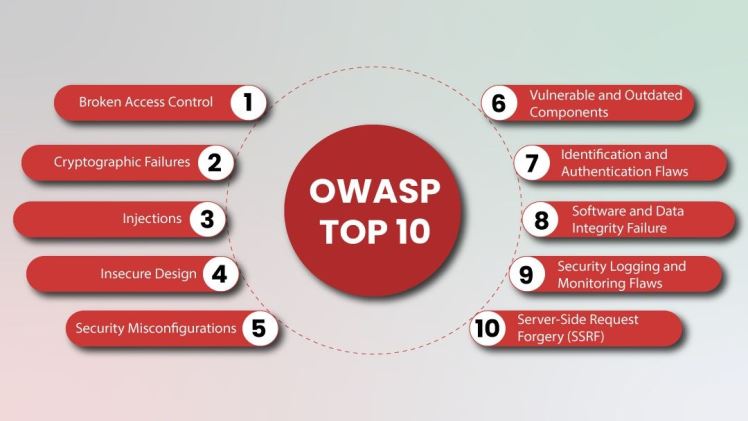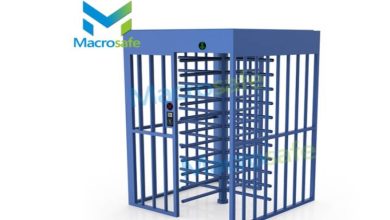Tips for Making the Most of OWASP Top 10

The OWASP top 10 list highlights the most critical web application security risks organizations face. First published in 2003, this list is periodically updated by the OWASP Foundation to prioritize the current threats and vulnerabilities developers need to address.
The latest 2020 OWASP top 10 provides an invaluable starting point for understanding application security. But how can development teams make the most of this resource? Here are tips for effectively leveraging the OWASP Top 10 to secure web applications.
Start with OWASP education.
Before diving into mitigations, first ensure everyone understands the risks outlined in the OWASP Top 10. Schedule an educational session to walk through the details of each item on the list. Discuss the vulnerabilities themselves, typical exploit methods, the potential impact, and real-world examples of attacks.
Building a strong conceptual foundation sets the stage for implementing appropriate safeguards. Be sure to cover the latest 2020 list rather than relying on outdated versions. Refresh and re-educate periodically, as the threat landscape evolves over time.
The OWASP Top 10 is useful for evaluating the security of these dependencies. Additionally, consider incorporating JavaScript tutorial into your development process to enhance your understanding of secure coding practices related to JavaScript.
Map defenses to OWASP categories
Next, map your existing defenses to the OWASP Top 10 categories. Are you properly covering the most serious risks? Are there any gaps in your protections? This mapping exercise highlights risk areas that may currently be overlooked.
For example, reviewing your security controls against the OWASP Top 10 may reveal that your application is vulnerable to injection attacks. Known defenses against this threat, like input validation and sanitization, should be deployed. Conduct this threat-focused analysis periodically to ensure your safeguards align with the latest high-priority OWASP threats.
Prioritize Investments by Top 10 Ranking
The ranking in the OWASP Top 10 signifies the relative prevalence and importance of each risk category. Use this prioritization as a guide for security spending. For example, putting extra resources toward mitigating widespread injection vulnerabilities will typically yield a better return on investment than trying to cover every edge case.
Of course, the risks facing your application may not precisely match the broad OWASP Top 10 population. But in the absence of perfect knowledge, the OWASP list provides a solid starting point for allocating security resources. It helps avoid squandering funds on obscure issues while overlooking more likely threats.
Evaluate Third-Party Components
Modern applications heavily incorporate third-party libraries and components, like open-source JavaScript tools. The OWASP Top 10 is useful for evaluating the security of these dependencies.
Check whether known vulnerabilities in third-party components correspond to items on the OWASP Top 10 list. If so, make patching or replacing that component a high priority. This helps identify the riskiest dependencies that need attention first.
Confirm any fixes properly address the relevant OWASP category too. For example, a SQL injection patch for a library should implement proper input validation, not just blacklist certain characters. Consulting the OWASP Top 10 guarantees comprehensive mitigation.
Customize for Your Technology Stack
While technology-agnostic, the threats in the OWASP Top 10 manifest differently depending on the languages, frameworks, and platforms used in your application. Develop custom references explaining how each OWASP risk appears specifically in your technology stack, along with tailored mitigation techniques.
For example, injection flaws play out differently in PHP versus.NET applications. Outline the specific inputs, APIs, protection mechanisms, and other areas developers should focus on for your particular technology stack. Build the connections between general OWASP risks and your precise implementation details.
Start building security in
The most effective way to address the OWASP Top 10 is to design applications with security in mind from the start. Embedding security principles like threat modeling, least privilege, and defense in depth in the development process prevents vulnerabilities from making it into code in the first place.
Make secure coding practices mandatory for developers with security training and design reviews. Perform automated scanning against the OWASP Top 10 risks in staging environments to catch issues before applications are deployed. Focus on security up front in the software development life cycle to minimize post-deployment issues.
Establish application security standards.
Use the OWASP Top 10 as the foundation for setting application security standards. Ensure standards provide specific secure coding techniques, design patterns, and principles tailored to your application architecture and technologies.
For example, precisely define what constitutes proper input validation and sanitization per coding language used. Provide code snippets showing insecure vs. secure examples implementing OWASP Top 10 mitigations. Clearly document the required security controls mapped to each OWASP category.
Clarify that meeting application security standards is mandatory, not optional. Enforce standards through mentorship, code reviews, and, if necessary, reworking code found lacking during security testing. Set expectations upfront that compliance is required, not the best effort.
Implement application shielding.
The OWASP Top 10 represents broad classes of vulnerabilities. While coder education, secure design, and threat modeling should be the primary defenses, application shielding provides another layer of protection.
Application shielding actively monitors for and blocks attacks exploiting the OWASP Top 10 vulnerabilities at runtime. Even if injection flaws or configuration mistakes make it into production code, specialized shields can intercept and stop attacks before they reach vulnerable code. Make shielding part of a defense-in-depth plan to minimize risk.
Prevent security regression.
Prioritize mitigating the current OWASP Top 10, but maintain legacy defenses too. Don’t let security regress as new frameworks and coding practices are adopted. Continuously scan for and address both emerging and outdated vulnerabilities.
Periodically run static and dynamic application security testing tools across your entire portfolio, including older legacy applications. Confirm you haven’t reintroduced past issues already addressed previously. The same defenses keeping older applications safe can be added to newer applications too.
Learn from others.
Finally, don’t operate in a silo. Continuously monitor peers, competitors, and security researchers for new OWASP insights. Participate in the application security community to stay on top of emerging techniques for addressing these risks.
Study security breach reports for case studies of OWASP Top 10 failures. Learn how other organizations failed and preemptively close similar gaps in your own defenses. Let the community help optimize your application security program.
The OWASP Top 10 provides an evolving blueprint for managing the most critical application security risks. Keeping this list central to your security program ensures limited resources are spent where they matter most. Organizations utilizing Appsealing to make the most of the OWASP Top 10 will be well-positioned to withstand the ever-changing threat landscape.





